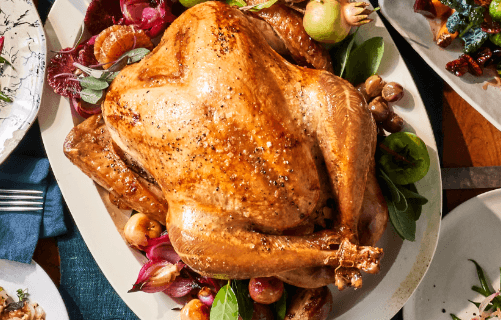
The Thanksgiving turkey has long been a focal point of holiday festivities, embodying themes of abundance and gratitude that trace back to early colonial encounters with indigenous cultures. As culinary techniques have evolved, families today employ a variety of methods to prepare this iconic dish, each reflecting unique interpretations and traditions. However, the significance of the turkey extends beyond mere sustenance; it serves as a catalyst for togetherness and shared appreciation. Exploring the historical context and the myriad culinary innovations surrounding this holiday staple raises intriguing questions about its enduring role in contemporary celebrations.
History of Thanksgiving Turkey
Historically, the turkey has been a central figure in Thanksgiving celebrations, symbolizing abundance and gratitude. Its association with the holiday dates back to the early 17th century when English settlers in North America first encountered the indigenous practice of feasting with this native bird.
The turkey’s symbolism transcends mere sustenance, reflecting cultural significance as a unifying element in communal gatherings and expressions of thankfulness.
See also: United States:Gibmrctfnhy= Map
Culinary Techniques and Recipes
Mastering the culinary techniques and recipes for preparing a Thanksgiving turkey is essential for creating a memorable and flavorful centerpiece for the holiday feast.
Employing effective brining techniques enhances moisture and flavor, while various roasting methods—such as high-heat or slow-roasting—yield perfectly cooked birds with crispy skin.
These methods not only elevate taste but also invite creativity, allowing personal expression in traditional cooking.
Fun Turkey Facts and Traditions
When it comes to Thanksgiving, turkeys are not only a culinary staple but also a rich source of fascinating facts and vibrant traditions that have evolved over the years.
Turkey symbolism varies across cultures, representing abundance and gratitude.
In the United States, the Thanksgiving turkey has become a cherished tradition, while other cultures celebrate with unique dishes, showcasing cultural variations in festive celebrations.
Conclusion
The Thanksgiving turkey stands as a timeless emblem of gratitude, embodying the rich tapestry of history and culinary artistry.
As families gather, the golden-brown bird graces the table, its aroma weaving a fragrant spell of warmth and togetherness.
It invites cherished memories and fosters connections, transforming a simple meal into a celebration of abundance.
In these moments, the turkey transcends its role as sustenance, becoming a symbol of unity, love, and the shared bounty of life’s blessings.




